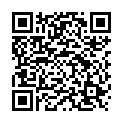|
|
|
| Module code: KI835 |
|
|
2V (2 hours per week) |
|
3 |
| Semester: 2 |
| Mandatory course: yes |
Language of instruction:
German |
Assessment:
Written exam
[updated 29.06.2007]
|
KI835 (P222-0054) Computer Science and Communication Systems, Master, ASPO 01.04.2016
, semester 2, mandatory course
|
30 class hours (= 22.5 clock hours) over a 15-week period.
The total student study time is 90 hours (equivalent to 3 ECTS credits).
There are therefore 67.5 hours available for class preparation and follow-up work and exam preparation.
|
Recommended prerequisites (modules):
KI735 Higher Mathematics 1
[updated 01.04.2003]
|
Recommended as prerequisite for:
|
Module coordinator:
Prof. Dr. Barbara Grabowski |
Lecturer:
Prof. Dr. Barbara Grabowski
[updated 01.04.2003]
|
Lab:
Applied Mathematics, Statistics, and eLearning (5306)
|
Learning outcomes:
Students will be taught the stochastic methods frequently applied in technical implementations of communications systems. They will be able to apply these methods to signal transmission (optimum coding problems) and to the optimization of communications systems (performance analysis, system stability).
[updated 29.06.2007]
|
Module content:
1. Mathematical methods in traffic theory
1.1. Introduction to the basic principles
1.2. Markov chains
1.3. Birth and death processes
1.4. Queues
1.5. Applications in traffic measurement
2. Mathematical methods in information and coding theory
2.1. Entropy
2.2. Information sources, optimal source coding
2.3. Channels and optimized channel coding
2.4. Mathematical methods in pattern recognition
[updated 29.06.2007]
|
Recommended or required reading:
GRABOWSKI B., Stochastik für Kommunikationsinformatiker, e-learning book in the ActiveMath series
KLIMANT, Piotraschke,Schönfeld: Infomations- und Kodierungstheorie, B.G.Teubner, Leipzig, 1996
WAHRMUTH E., Mathematische Modelle in der Simulation diskreter Systeme, ZFH Koblenz, 2002
[updated 29.06.2007]
|
Module offered in:
SS 2017,
SS 2016,
SS 2015,
SS 2014,
SS 2013,
...
|


